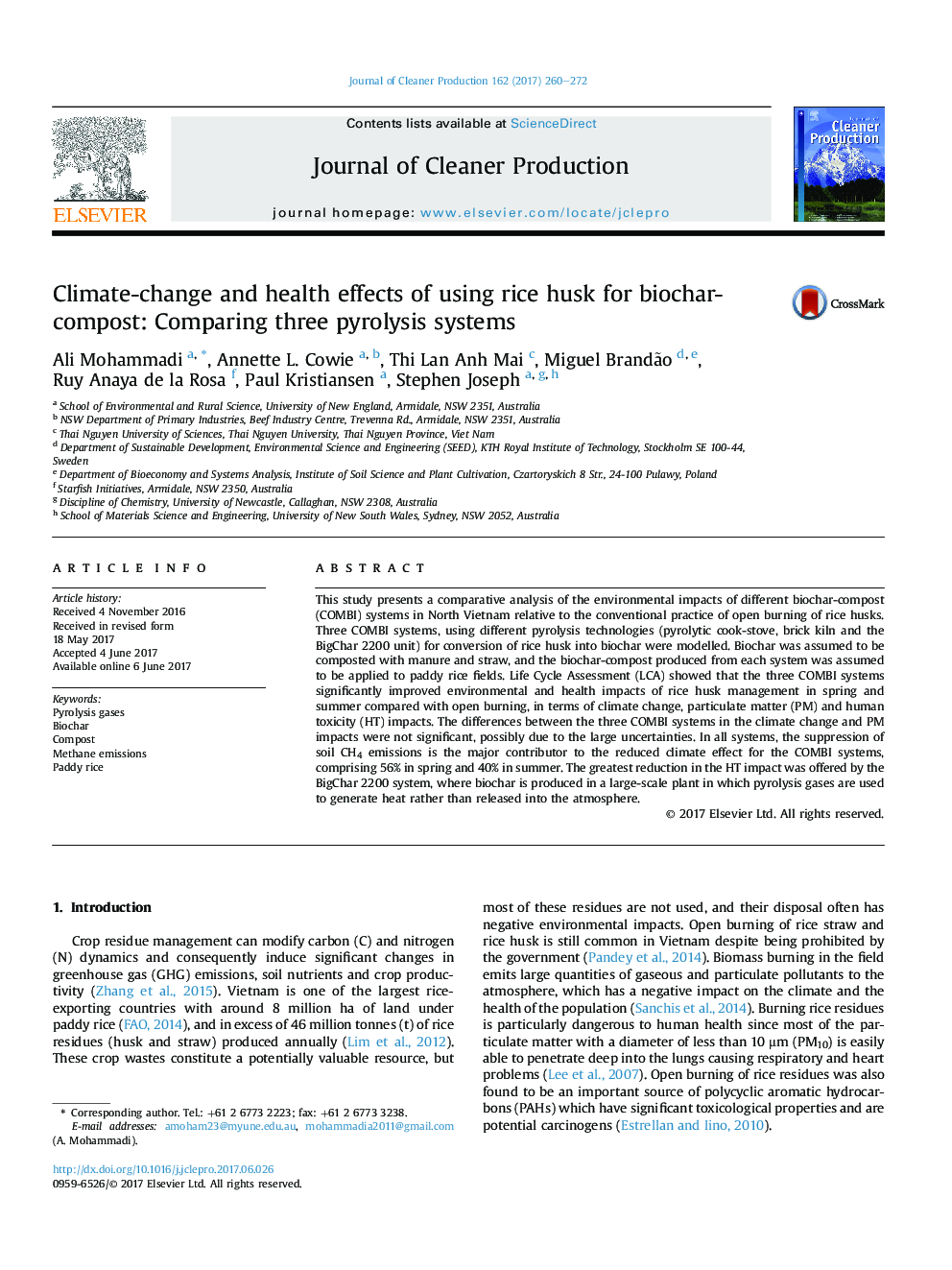| کد مقاله | کد نشریه | سال انتشار | مقاله انگلیسی | نسخه تمام متن |
|---|---|---|---|---|
| 5479345 | 1522092 | 2017 | 13 صفحه PDF | دانلود رایگان |
- Climate-change and health impacts of using rice husk for biochar-compost were estimated.
- Pyrolytic cook-stove, brick kiln and the BigChar unit for biochar production were modelled.
- Suppression of soil CH4 emissions was the major contributor to the climate impact.
- The greatest reduction in the health effects was offered by the BigChar system.
- Pyrolysis gas recycling for sustainable biochar production is significant.
This study presents a comparative analysis of the environmental impacts of different biochar-compost (COMBI) systems in North Vietnam relative to the conventional practice of open burning of rice husks. Three COMBI systems, using different pyrolysis technologies (pyrolytic cook-stove, brick kiln and the BigChar 2200 unit) for conversion of rice husk into biochar were modelled. Biochar was assumed to be composted with manure and straw, and the biochar-compost produced from each system was assumed to be applied to paddy rice fields. Life Cycle Assessment (LCA) showed that the three COMBI systems significantly improved environmental and health impacts of rice husk management in spring and summer compared with open burning, in terms of climate change, particulate matter (PM) and human toxicity (HT) impacts. The differences between the three COMBI systems in the climate change and PM impacts were not significant, possibly due to the large uncertainties. In all systems, the suppression of soil CH4 emissions is the major contributor to the reduced climate effect for the COMBI systems, comprising 56% in spring and 40% in summer. The greatest reduction in the HT impact was offered by the BigChar 2200 system, where biochar is produced in a large-scale plant in which pyrolysis gases are used to generate heat rather than released into the atmosphere.
Journal: Journal of Cleaner Production - Volume 162, 20 September 2017, Pages 260-272
